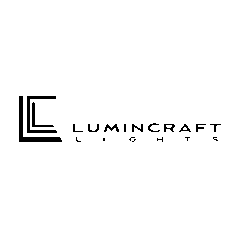Architectural Lighting for Exteriors: Highlighting Facades the Right Way
Architectural lighting is not about brightness; it is about creating the architecture with light to show the narrative. The correct exterior lamps can highlight the architecture, enrich textures, increase delight, and even determine the experience of a spot at night. This article describes the right way of using architectural lighting to spotlight facades.
Start with a Lighting Concept
Lighting in architecture should be based on design principles, which must correlate with the building’s form, material, and aesthetic.
Key considerations to look for:
- What features of the facade do I want to highlight?
Give attention to architectural detail, such as building columns, textural elements, entrances, or walls. With good lighting, these darkened features make them look deeper and deeper in character.
- How do I want the building to feel at night?
Select if you want dramatic, minimalist, warm, or modern. Color temperature, beam angles, and placement of the fixtures will depend on your goal.
- Is the lighting purely decorative, or should it serve a function too?
Architectural lighting often intersects with security and pathway illumination. Combine aesthetics with practicality for the best results.
Tip: Use concept sketches or renderings to visualize light angles and contrasts on the building before installation.
Know the Types of Architectural Lighting Techniques
To achieve the right effect in outdoor or façade lighting, it’s important to understand how different techniques work. Each method creates a unique visual impact and serves a specific purpose:
- Uplighting: Fixtures installed at ground level cast light upward onto walls, columns, or plants. The method produces dramatic shadows and highlights verticals and textures.
- Downlighting: Mounted higher on walls or soffits, these fixtures cast light downward to create a more natural moonlight effect, commonly used near entrances or large surfaces.
- Wall Washing: Broad beam angles bring Diverse coverage on large, flat surfaces. The method reduces the number of shadows and improves the color and texture of the walls.
- Wall Grazing: Lights are placed close to textured surfaces to emphasize depth. Ideal for stone, brick, or wood facades where texture is an important visual element.
- Silhouetting and Backlighting: Placing lights behind objects (such as sculptures, trees, or partitions) results in a dramatic silhouette that looks interesting but does not expose.
Spotlighting and Accent Lighting: Focused beams highlight specific details such as arches, logos, signage, or decorative elements.
Select the Right Fixtures for the Job
Use the chart below to guide fixture selection based on the design goal and location.
Application | Recommended Fixture Types |
Wall Grazing | Narrow-beam LED wall grazers, linear in-ground lights |
Uplighting Columns/Arches | Adjustable ground-mounted LED spotlights or floodlights |
Entryway Highlighting | Recessed downlights, surface-mounted sconces, or pendant-style fixtures |
Textured Surfaces | Wall washers or closely placed LED strips for shadow play |
Signage and Facade Logos | Directional spotlights with narrow beam angles and low glare shielding |
Path and Perimeter Lighting | Bollards, recessed pavers, or directional landscape fixtures |
Consider Design and Material Harmony
To achieve a cohesive and visually appealing lighting design, it’s essential to align your choices with the building’s materials, style, and overall aesthetic. Keep the following in mind:
- Match Color Temperature to Material Palette
Earthy brick, sandstone, and wood are complemented with warm white lighting (2700K, 3000K), highlighting their natural colors. On the contrary, concrete, glass, and modern minimalist exterior buildings need cool white lights with temperatures varying between 4000K and 5000K to bring out a clear and clean appearance.
- Balance Brightness and Contrast
Avoid overly bright fixtures that wash out detail. To create depth and one-sided light balance, use dimmable drivers and deploy layered light sources along the facade.
- Coordinate Fixture Finish with Architecture
Matte black, bronze, or stainless steel fixtures combine well with contemporary facades, and antique or brushed fixtures best suit heritage or classical facades.
Integrate Controls and Smart Features
Automation and smart controls help in increasing energy efficiency and beauty in control.
- Timers and Dusk-to-Dawn Sensors: Timers and dusk-to-dawn sensors allow you to make your lights automatic based on time or ambient light. It will suit homeowners and commercial entities that want to save energy.
- Dimming and Scene control: Dimmers can control brightness by zone, depending on the time of day or event. Scene presets are user-friendly, so you can change the lighting mode to welcome, evening, or event.
Easy to Integrate: Link your architectural lighting to home automation or a mobile application to control it fully. Voice and movement detection, as well as remote calls, provide further utility and flexibility.
Installation: Get It Right the First Time
Installation of the architectural lighting has to be precise and safe, and should aesthetically look good. Incorrect installations may result in uneven light, glare, or expensive reconstruction.
- DIY Installation: Best suited for simple applications like plug-in uplights or smart landscape bollards. Requires basic tools and careful planning for cable routing and positioning.
Professional Fitting: Wired systems require higher installations or commercial facades, and professional electricians or lighting designers must properly align fixtures, handle heavy loads, and meet the codes.
Why Choose Lumincraft?
Lumincraft is your building partner in architectural lighting solutions, combining the latest technology, design, and delivery with reliability. Lumincraft, being an authorized dealer of international lighting brands, offers:
- Wide range of architectural grade lighting, such as spotlights, grazers, wall washers, and smart outdoor fixtures
- Durable, weather-rated products built to last in challenging outdoor environments
- Technical support and professional help in all stages of the process: selection and final fitting
